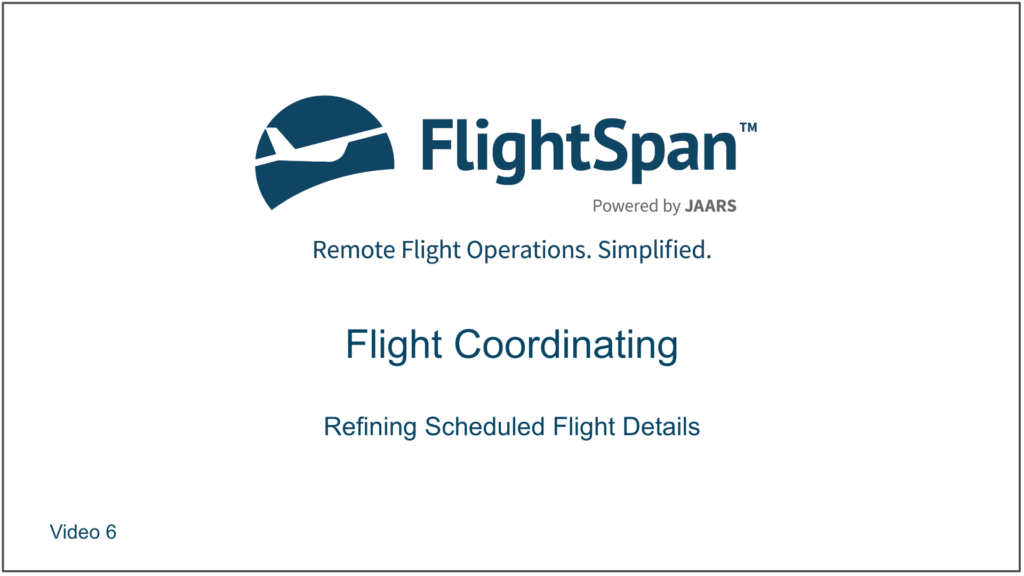Privacy, Tags, and Notes
The flight may be hidden on the public calendar by checking the Private box.

Tags
Tags that may be visible on public (depending on the settings) and will be visible internal calendars may be added to a flight for a variety of reasons. Some examples where they might be useful are tagging training flights; assigning practice areas for training flights; and tagging positioning flights.
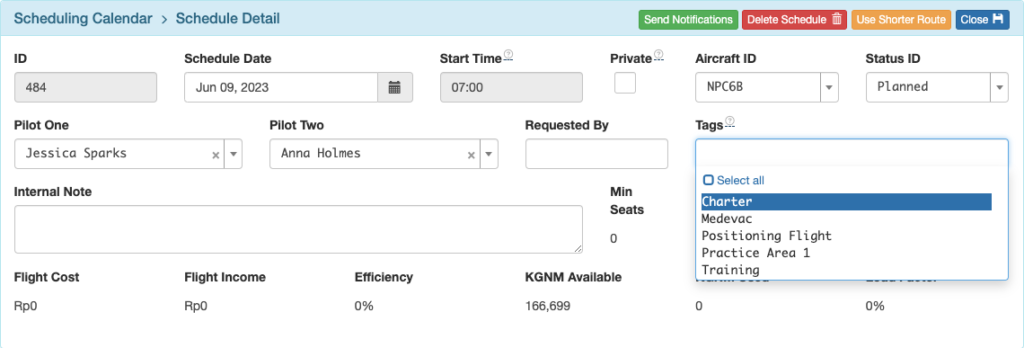
Tags are visible when hovering on the Scheduling Calendar,

On the Two Week Calendar,

And when hovering on the Monthly Calendar.
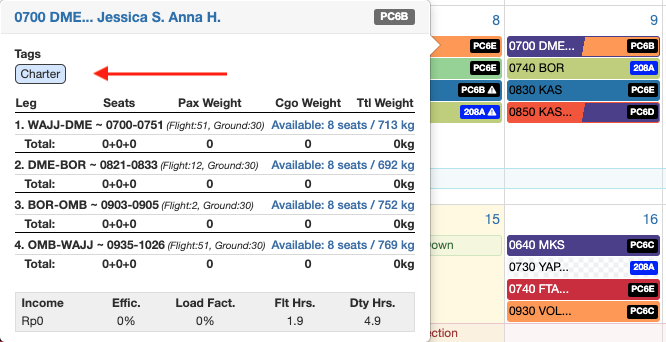
Internal Notes
Internal notes will be visible on internal calendars but not on public calendars.

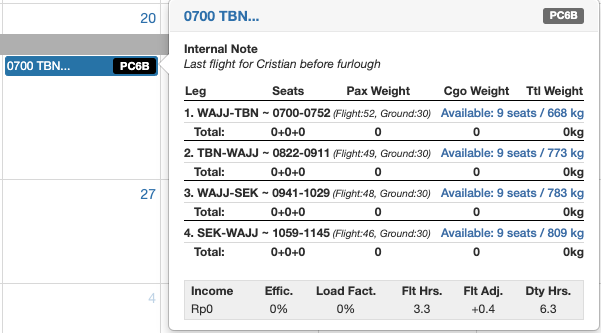
Schedule Notes
Schedule notes, which can be added to individual legs, will be visible on the public calendars.
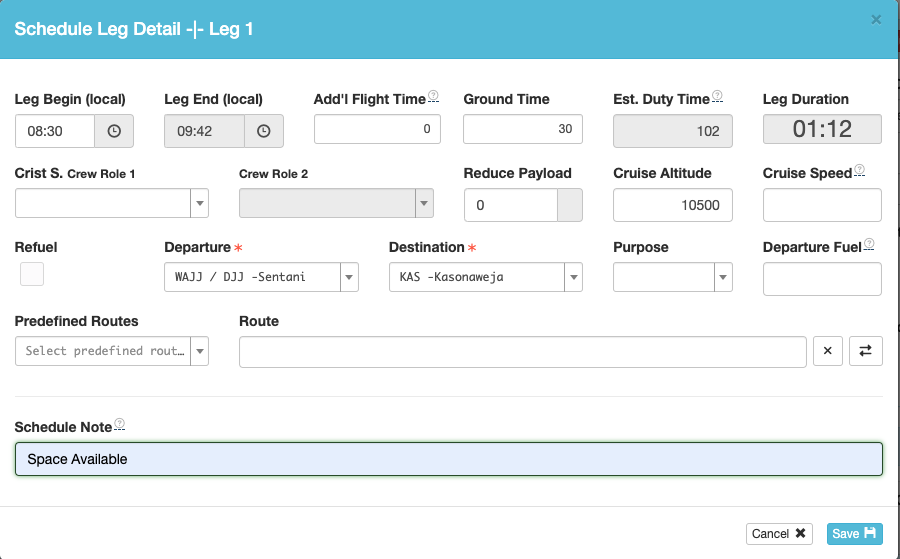

Schedule Notes can also be viewed in FlightSpan™ Ops by hovering over the note icon that appears in the Scheduled Legs section of the Schedule Detail.

Published Notes
Published Notes can be set on each load.

Published Notes are visible on both internal and public calendars on the two week calendar:

And on the monthly calendar when you click on the flight:

Flight Title
Add a flight title if desired.

Note: If a Flight Request with a Request Title is dragged onto the Scheduling Calendar to create a flight, the Request Title will be used as the Flight Title.
The title will be visible on the Scheduling Calendar on both the flight and its hover details.

It will also be visible on the monthly calendar if the two line display is enabled, and on the flight’s hover information.

Note: Flight Title is not visible on the public calendar.
Leg Details
Legs may be edited by clicking the pencil icon or the fuel icon.


Both buttons pull up the same window.
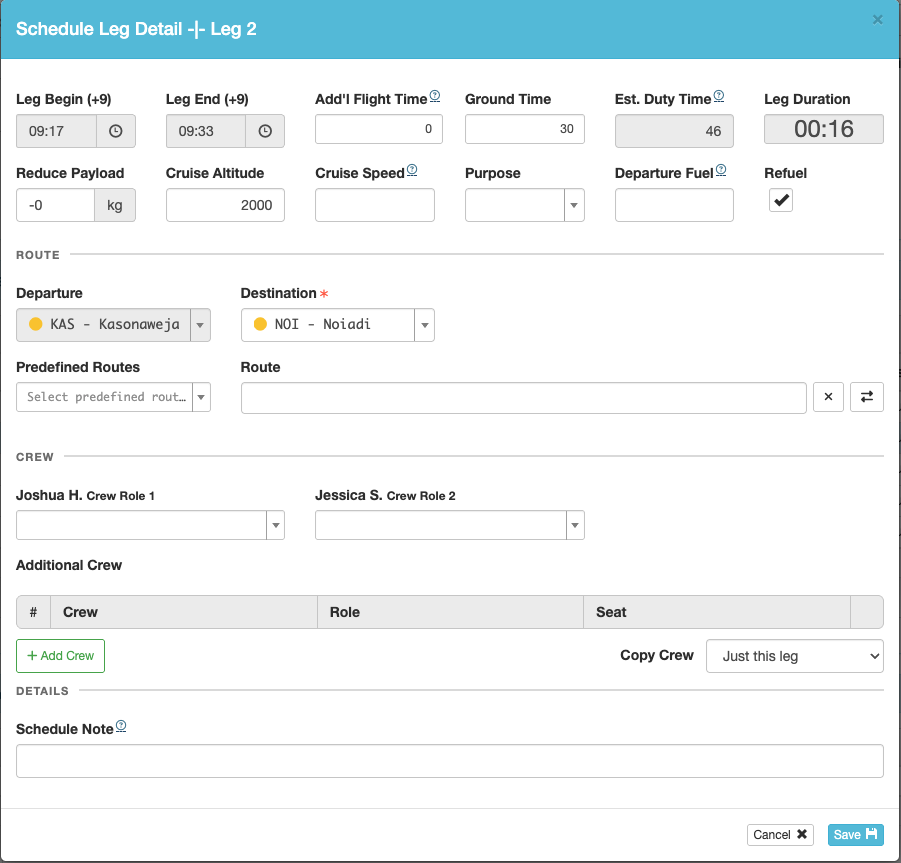
Additional Flight and Ground Time
On an en route leg (e.g. WAJJ-KAS), Additional Flight Time of 10 minutes (second screenshot) will be added to the calculated Leg Duration of 1:12 (first screenshot).
Adjusting ground or flight time will correspondingly change the Estimated Duty Time.


The default setting in FlightSpan™ Ops is for traffic patterns to last six minutes, but from the Aircraft EFB Preferences tab, you can set a different default for each aircraft type.

Additional Flight Time will override the total Leg Duration.


Additional flight time will be indicated on the Schedule Detail with a plus symbol. (See the NOI-NOI leg)

FlightSpan™ Ops has default ground times, but from the Aircraft Detail, you can set a different default for each aircraft type.

If the destination is a refueling point, then the ground time is increased by the additional ground time for refueling if that value has been set in the Aircraft Type EFB Preferences tab for each aircraft type.

Ground time can also be adjusted manually for each leg.
Adjusting ground or flight time will correspondingly change the estimated duty time.

Payload, Altitude, Speed and Purpose
Reducing payload will override the default payload calculation.

The Max payload number will be adjusted and flagged. Hovering over the flag will display the adjustment.

Cruise altitude is prefilled based on the altitudes defined in the cruise altitude chart, but it may be changed to accommodate terrain or other operational needs.
Cruise speed should be changed only under special circumstances, such as search and rescue.

Set the purpose code for reporting purposes if desired. Note that the purpose code must be set for each leg.

Fuel Planning
Default fuel planning is to depart with sufficient fuel to arrive at the next refueling waypoint with standard reserves.
Refueling waypoints are indicated by a green gas pump icon.

Reserve fuel is set in the Aircraft Type EFB Preferences. Note that you can set a Flight Coordinating fuel reserve that is higher than your standard company fuel reserves for each aircraft type.

A waypoint can be set as a default refueling point by editing the Waypoint Detail and selecting the aircraft types that can refuel there.

You can make any departure point a refueling point by checking the Refuel button.

To override the default departure fuel level, enter the desired fuel level in the Departure Fuel cell.

Or, click on the Edit Aircraft Config button in the Seats/Equip column.

Set the desired fuel level and save.

When a default fuel calculation is overridden, it will be indicated by a red fuel pump icon.

Route
Predefined routes may be added, for instance the VFR route from Jayapura VOR to Mulia via Dorman Pass.

If the route in the database is for the reverse direction (as in this case) reverse the route by clicking on the invert button. Clear the route with the x button.

Crew
Crew roles set for the first time on any leg will be assigned to all legs. But subsequently, on any given leg you can change crew roles without affecting the other legs.
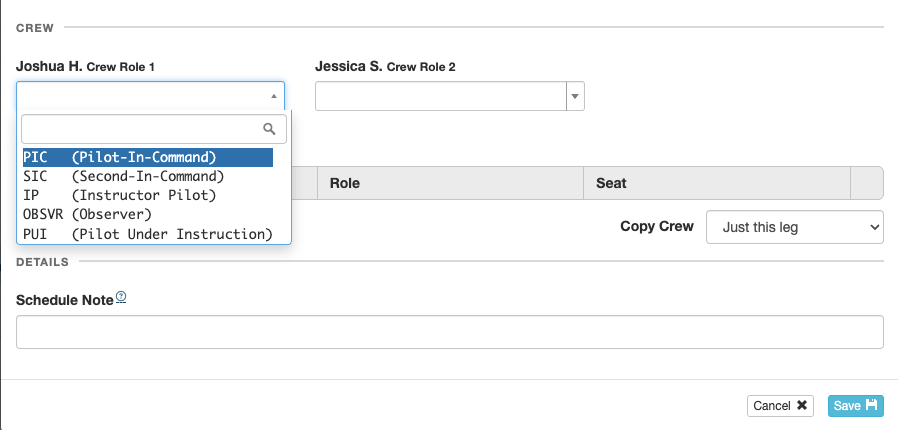
To assign additional crew, such as a flight attendant, see the Crew Assignment documentation.
Move Load to a Different Leg
Loads can be easily moved if a load is on the wrong leg.

This is most likely to happen if you have a flight going from A-B-A-C, and you have a load going from A-C (not on a separate manifest), since FlightSpan™ defaults to placing the load on the flight the first time it departs the load’s departure point.
You may also notice the problem from the Scheduled Legs section, where the Payload isn’t correct.

And if you have created a manifest for the first leg, you will see the load in the Loads Transiting section below the manifest.
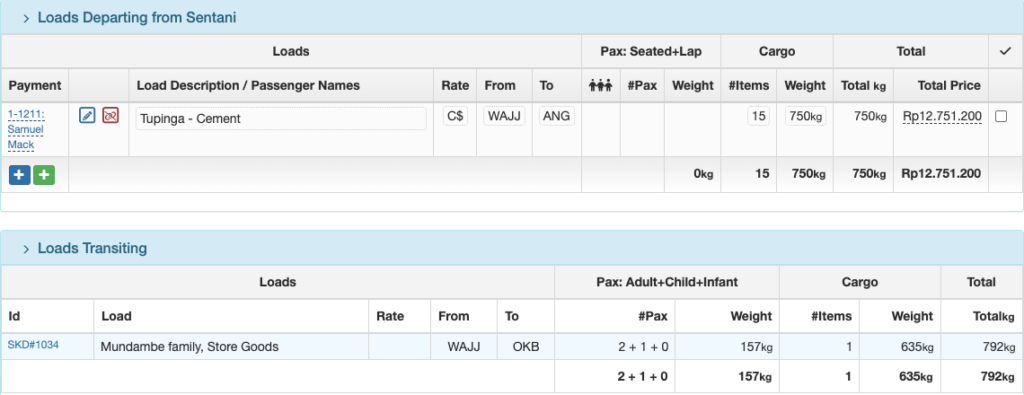
From the Schedule Detail, click on the pencil icon next to the load you wish to move.

In the Load Detail, open the Departure Leg and select the desired leg.

The Payload section will now be correct and the load will no longer be in the Loads Transiting section of the manifest.

Video Version
